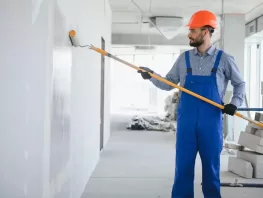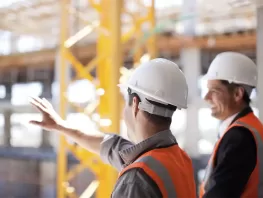
The Role of Sandblasting in Historic Restoration Projects
Posted Feb 17, 2025 by Dave Scaturro

Historic buildings tell the story of our past, preserving architectural details and cultural heritage. However, the passage of time, exposure to the elements, and environmental pollutants can leave these structures deteriorated and in need of restoration. One of the most effective methods for bringing aged surfaces back to life while maintaining their integrity is sandblasting. When done correctly, sandblasting removes years of built-up grime, corrosion, and old coatings without compromising the structure’s historical value.
Why Surface Preparation is Critical in Historic Restoration
Restoring old buildings isn’t just about making them look good again—it’s about preserving materials that could be decades or even centuries old. Traditional cleaning methods can be too harsh or ineffective, potentially damaging irreplaceable surfaces. Sandblasting, when performed with precision and the right media, provides a controlled approach to removing unwanted layers while keeping the original material intact.
Proper surface preparation is crucial because it ensures that new coatings, sealants, or structural reinforcements properly adhere. Whether a restoration involves brick, stone, metal, or wood, careful blasting techniques allow for a clean and stable surface without erasing historic craftsmanship.
Choosing the Right Sandblasting Method for Historic Structures
Not all sandblasting techniques are suitable for historic buildings. The type of abrasive media and pressure used must be carefully selected to avoid excessive wear. Some of the most effective methods include:
Dry Ice Blasting – A non-abrasive method that removes contaminants without harming delicate surfaces, making it ideal for intricate stonework or wood detailing.
Walnut Shell Blasting – A gentle and biodegradable option that lifts dirt and paint without excessive abrasion.
Soda Blasting – Using baking soda as an abrasive, this method is effective in removing old paint and grime while neutralizing acids that contribute to further deterioration.
Low-Pressure Sandblasting – When necessary, fine silica or garnet media can be used at reduced pressure to clean metal and masonry without excessive erosion.
Each method must be tailored to the building’s material and condition, ensuring that the cleaning process enhances the structure rather than causes additional damage.
Preserving Architectural Details During Restoration
Historic buildings often feature intricate carvings, masonry work, and decorative metal elements that can be fragile. Sandblasting provides an effective way to restore these details without excessive hand labor. By carefully controlling pressure and media, skilled professionals can reveal the original beauty of brickwork, wrought iron, and stone facades without erasing historical craftsmanship.
The Long-Term Benefits of Sandblasting in Restoration
Beyond improving appearance, sandblasting contributes to the long-term preservation of historic structures by:
Removing harmful pollutants that cause decay and corrosion.
Eliminating old lead-based paint in a controlled and safe manner.
Preparing surfaces for protective coatings that shield against future damage.
Preventing structural deterioration by clearing away damaging layers of rust and mold.
Trust the Experts for Your Historic Restoration Needs
Restoring a historic building requires precision, experience, and respect for its original craftsmanship. Sandblasting, when performed by trained professionals, ensures that delicate surfaces are treated with care while extending the lifespan of the structure.
If you have a historic restoration project and need expert surface preparation, reach out to our team today. We specialize in providing tailored solutions that protect and revitalize architectural heritage, ensuring that these treasured landmarks stand strong for generations to come.









